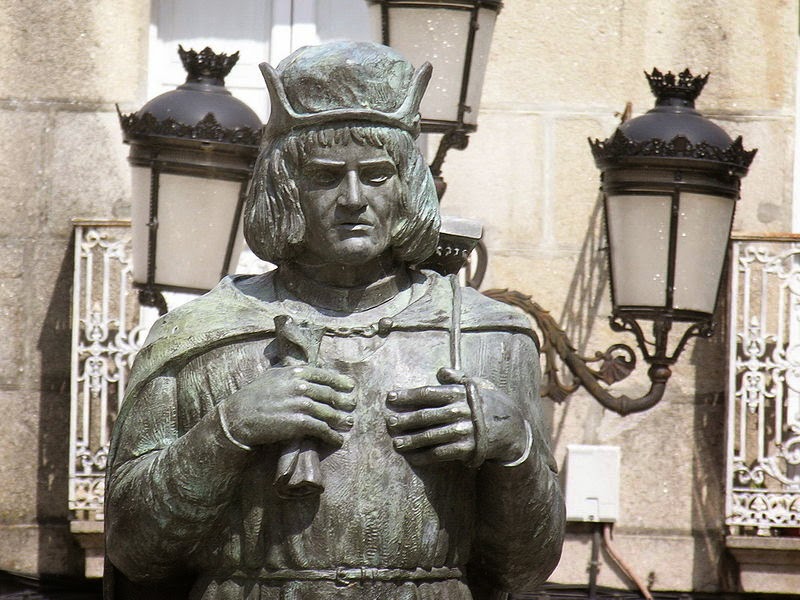 |
| Matteo da Milano (active 1492-1523) - Getty |
I remember going to the Special Collections library and, for my first time, touching a book from the 17th-century. I gingerly approached the cradle in which it rested, trying not to even breathe on it, for fear that I'd somehow ruin it. A professor who had arranged the trip to the library leaned in and said something to the effect of: "Go ahead, turn the page. These things are quite durable. Vellum: undoubtedly a superior technology."
It's true, of course, that vellum and rag-paper used in the early modern period remains a far stronger material than the thin sheets of paper on which books are now printed. These manuscripts were also hand-sown, hand-bound into leather, and sometimes even hand-painted with incredible miniatures.
Although the bookmaking methods of the early modern period may have resulted in more resilient book objects, the digital age has been making those texts more and more readily available for study and enjoyment. As an increasing number of medieval manuscripts are digitized and sent into the world via the Internet, the more opportunity there is for discovery.
Discovery of these digitized manuscripts is significantly helped along by museum websites and blogs dedicated to the subject. For example, if you're not following Sexy Codicology, you're missing out. Their blog highlights at least one manuscript a week, exploring it with high resolution images of the text and its miniatures. They also have a sister project, the Digitized Medieval Manuscripts Maps (DMMmaps) project, which allows viewers to interact with maps and texts as well as contribute data, via their crowd-source format.
 |
| Court workshop of Ludwig I of Lignite - Getty |
Recently, over at the DMMmaps blog, they did a piece on the Getty collection of digitized manuscripts. It is a treat for the eyes, complete with images and video of some of the many incredible book objects the Getty has in its collection.
I am thrilled that modern technology allows for such an incredible level of accessibility to these manuscripts, but at the same time I resent looking at them on the computer (not least because it means universities are more apt to withhold travel funding now that texts magically appear on the Internet for free). Seeing these old books in person - smelling them, seeing their enormous physical weight, touching the binding where the hands of a 16th-century bookbinder sewed together the folios - its all part of the way the book is read.
 |
| Unknown illuminator - "The Lamb Defeating the Ten Kings" (c. 1220-35) - Getty |
I am grateful to have a world of images at my fingertips through my computer, but I am also increasingly aware that reading a book is more than making sense of the words and images on the page... it is reading what went into making the page, binding the pages together, where the ink came from and how it flowed out into words, how hundreds of brush strokes and gold leaf made an image, hiding inside a letter "R" come to life.
Recently, I watched a documentary on the making of museum-grade copies of one of the world's most treasured atlases, which hails from a slightly later time period than the texts pictured above. Nevertheless, I highly recommend taking a peek at this fascinating story, that tells of both the atlas' original creation and its modern re-creation in facsimile.
There is an almost meditative quality about the slow and meticulous processes of producing a book you know will be able to last for a long time into the future. The original context in which the Atlas Blaeu Van der Hem was produced required hours upon hours of artists, working at their craft, traveling across oceans into completely unknown lands. I like that here, the folks reproducing the Atlas Blaeu go through a slow and meticulous process also, but in a completely modern way. They travel into the field of digital technology and emerge with a new/old book that has apparently married the last 600 years of bookmaking methods.
 |
| Unknown illuminator - "Inhabited initial letter 'B'" (c. 1153) - Getty |
This is one of those stories that gives me hope that the digital age is likely very compatible with the study and appreciation of medieval texts. Which is good news, because I've been drooling over the Getty images all weekend.
***
What are your favorite old books? Have you ever had the chance to read from a book several hundred years old?
Until next time - keep rustling!





_-_WGA14180.jpg)






































